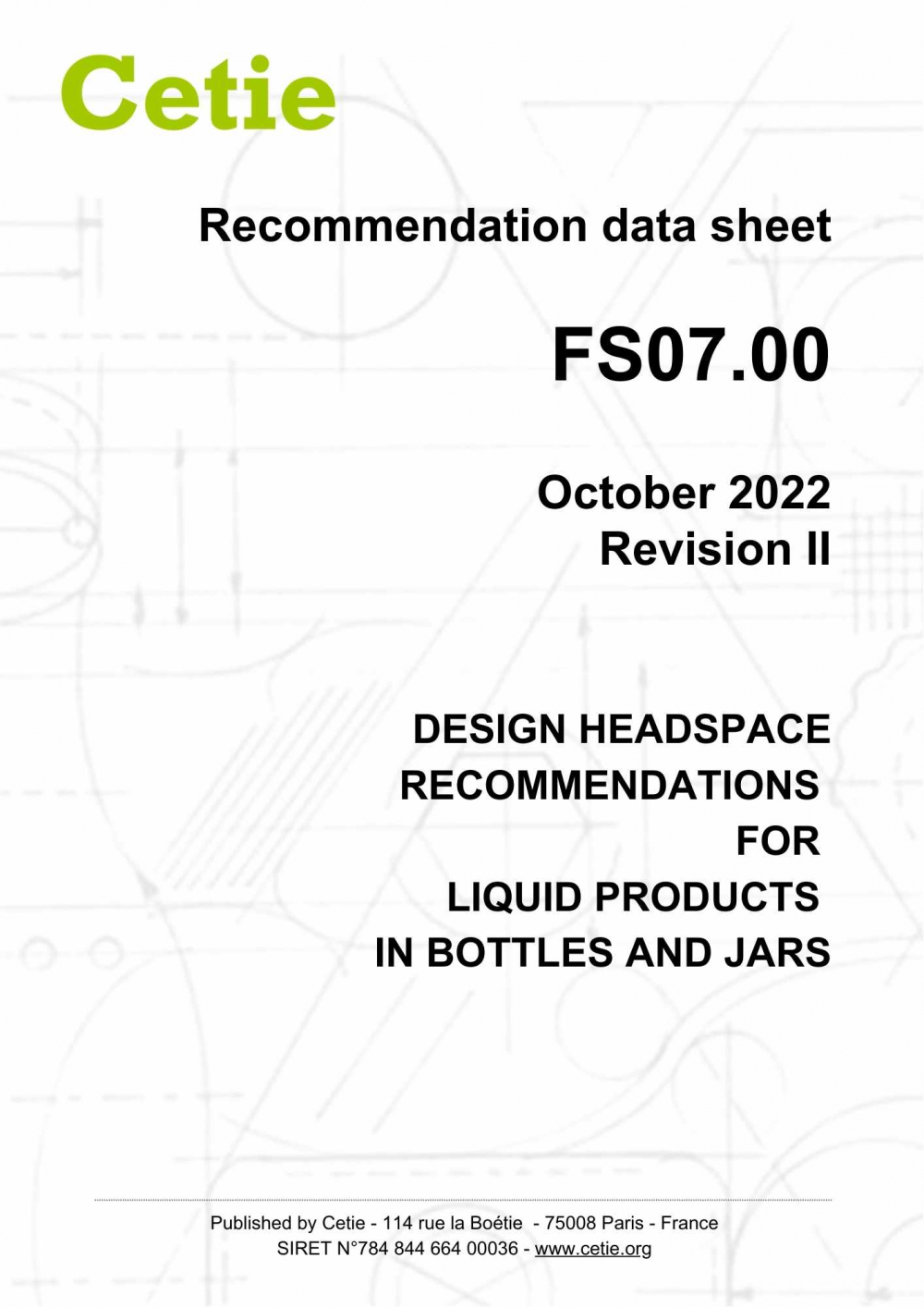FS07.00
Revision II
Published on: 15/10/2020
Design headspace recommendations for liquid products in bottles and jars
Scope of application
This document specifies design headspace recommendations for liquid products in glass containers. It does not concern containers for powders and tablets or flaconnage-type bottles. Note that for food products in wide-mouth containers with a vacuum seal closure, fill levels determine the level of vacuum obtained and are the responsibility of the filler and the cap supplier. The actual headspace achieved in the filled product is the responsibility of the filler. For general information on the physical principles governing headspace requirements, refer to Cetie FS15.00 - PHYSICAL PRINCIPLES FOR CONTAINERS FILLED WITH NON-CARBONATED PRODUCTS.
Table of contents
1. Scope
2. Definitions
3. Design target recommendations for headspace
3.1. Design headspace
3.2. Carbonated beverages
3.3. Non-carbonated beverages
3.3.1. Fruit and vegetable juices in wide mouth containers
3.3.2. Spirits
3.3.3. Wines and fortified wines
3.3.4. Milks
2. Definitions
3. Design target recommendations for headspace
3.1. Design headspace
3.2. Carbonated beverages
3.3. Non-carbonated beverages
3.3.1. Fruit and vegetable juices in wide mouth containers
3.3.2. Spirits
3.3.3. Wines and fortified wines
3.3.4. Milks
3.3.5. Edible oils
4. Related documents
4.1. Cetie
5. Data sheet history
4. Related documents
4.1. Cetie
5. Data sheet history
History
First edition: 11/2002
Revision I: 04/2018
Revision II: 10/2020
First edition: 11/2002
Revision I: 04/2018
Revision II: 10/2020
Contributors
AH CONSULT, ARDAGH, BA GLASS, BRITISH GLASS, ENCIRC GLASS, KD CONSULT, O-I MANUFACTURING, SAVERGLASS, VERALLIA, VETROPACK, VIDRALA, WIEGAND-GLAS.
Document under responsibility of working group:
Glass wg1+4
WG chair: Arnaud JANIN - VERALLIA FRANCE
This permanent group is dedicated to a wide range of topics downstream of the production of glass bottles and jars dedicated to the food and beverage industries:
- Surface treatments, marking, labelling;
- Testing methods (impact, headspace, internal pressure, etc.);
- Nomenclatures (of finishes, jars, bottles, and visual defects, etc.);
- Quality management (food and beverage safety, best practices, regulations).
